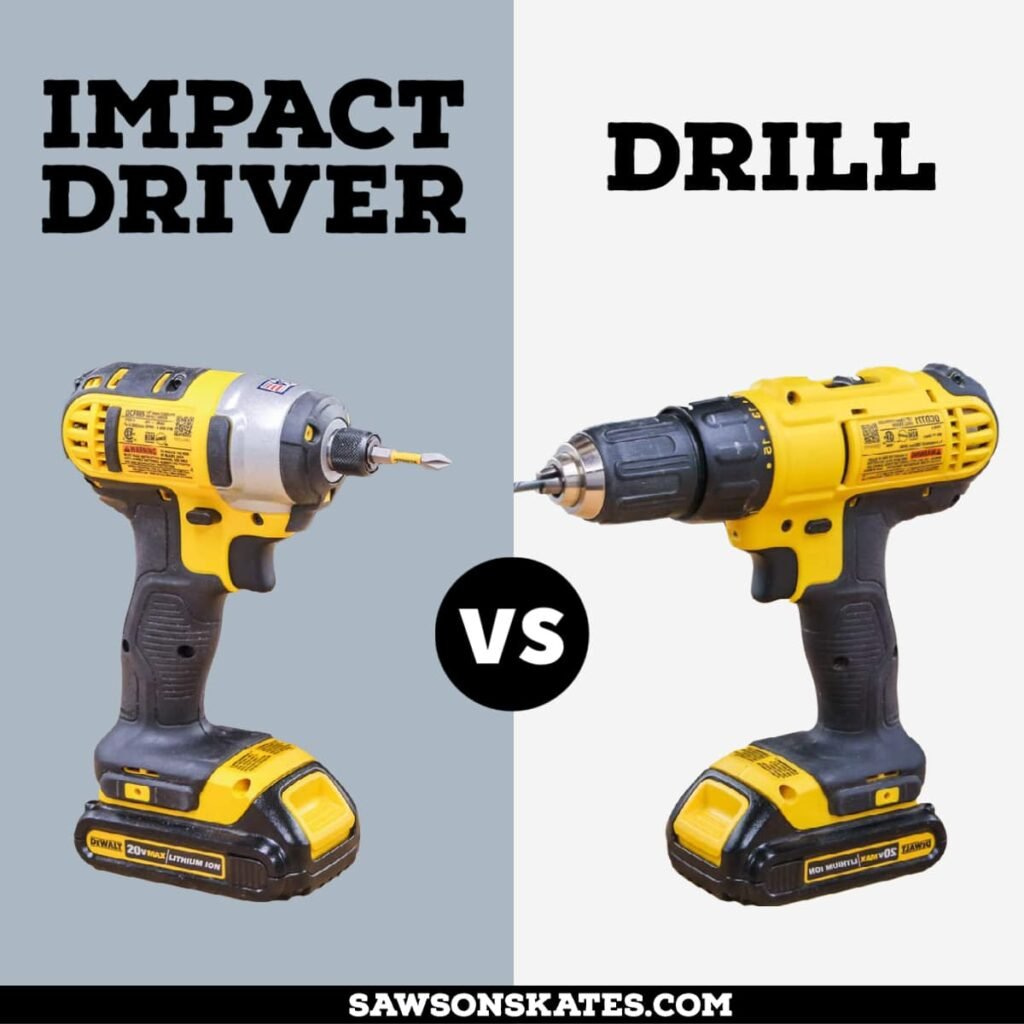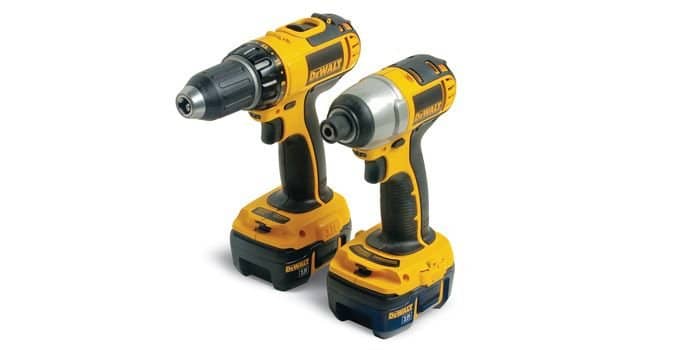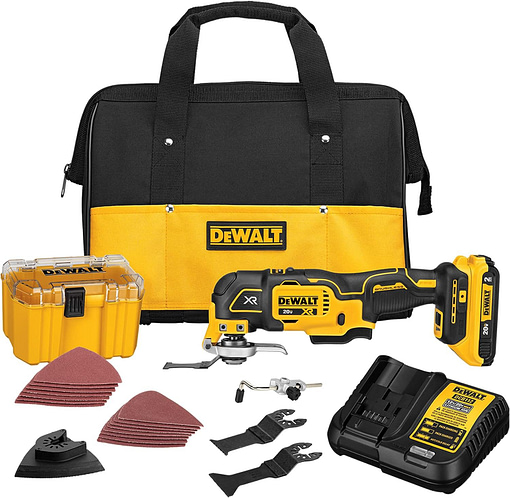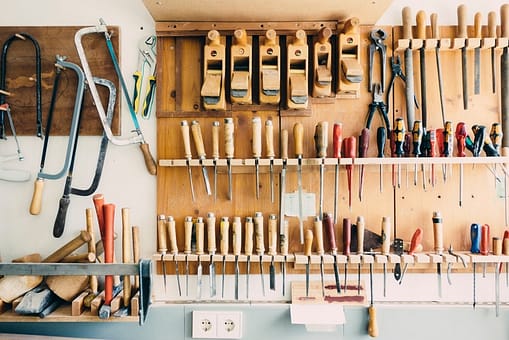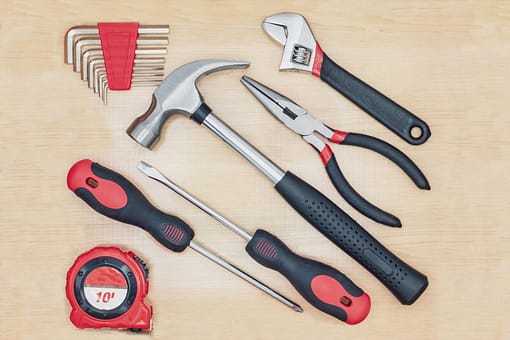If you’re in the market for a power screwdriver or impact driver but feeling overwhelmed by the options, fear not! This article is here to guide you in selecting the perfect tool to meet your needs. Whether you’re a seasoned DIY enthusiast or just starting out on your home improvement journey, we’ve got you covered. By the end of this article, you’ll have a clear understanding of the type of power screwdriver or impact driver that will make your projects a breeze. So let’s get started!
Power Screwdrivers vs. Impact Drivers
When it comes to tackling your DIY projects or professional tasks, having the right tools can make all the difference. Two popular options for driving screws and fasteners are power screwdrivers and impact drivers. While they may seem similar at first glance, they have distinct differences that can affect their performance and suitability for various projects. In this article, we will explore the differences between power screwdrivers and impact drivers, as well as the factors to consider when choosing the right tool for your needs.
Power Screwdrivers
Power screwdrivers are designed to handle basic screwdriving tasks. They are available in both corded and cordless options, offering versatility and convenience. These tools are generally lightweight and compact, making them easy to maneuver in tight spaces. Power screwdrivers are ideal for tasks such as assembling furniture, installing shelves, or replacing electrical outlet covers.
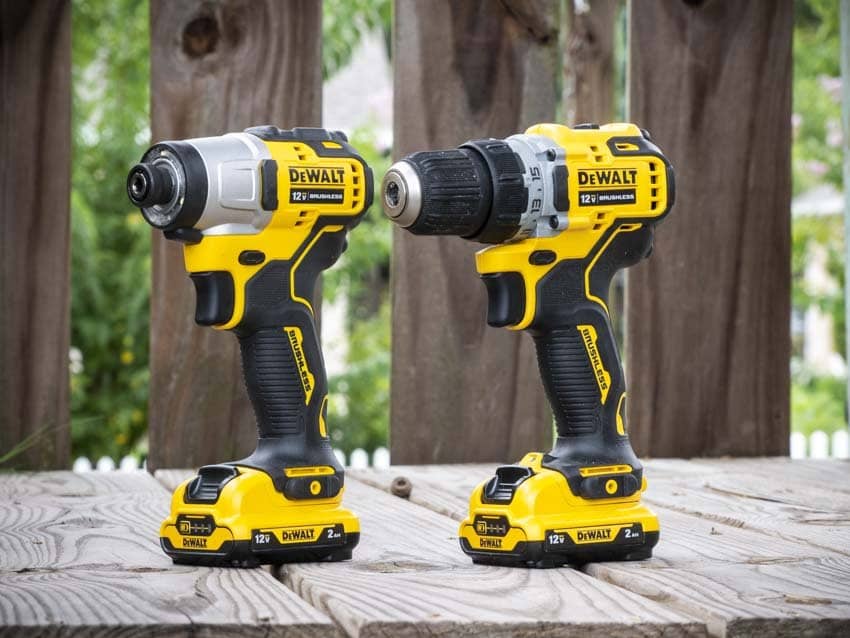
Impact Drivers
On the other hand, impact drivers are more powerful and robust compared to power screwdrivers. They are specifically designed to drive screws into tough materials such as hardwood or masonry. Impact drivers use a combination of rotational force and concussive blows to deliver high torque, making them incredibly efficient in driving in fasteners. These tools are commonly used in woodworking, construction, and automotive industries.
Key Differences
There are several key differences between power screwdrivers and impact drivers that are important to consider before making a purchase. One major difference is their torque output. Power screwdrivers typically have lower torque compared to impact drivers, which means they may struggle with heavier duty tasks. Impact drivers, on the other hand, provide immense torque, allowing them to handle even the toughest fastening jobs without bogging down.
Another notable difference is the type of drive mechanism used. Power screwdrivers often feature a standard chuck that holds the screwdriver bit securely. Impact drivers, however, have a quick-change hex chuck, which allows for easy and quick bit changes. This feature makes impact drivers highly efficient when it comes to switching between different screwdriving tasks.
The noise level is another factor to consider. Power screwdrivers tend to be quieter compared to impact drivers, mainly due to the impact mechanism in the latter. If you are working in a noise-sensitive environment or if noise is a concern for you, a power screwdriver might be the better option.

Factors to Consider When Choosing a Power Screwdriver or Impact Driver
Now that we have explored the differences between power screwdrivers and impact drivers, let’s delve into the factors you should consider when deciding which tool is right for you.
Type of Projects
Firstly, consider the type of projects you will be working on. If you primarily work on light household tasks or small woodworking projects, a power screwdriver should suffice. However, if you are tackling larger construction projects or dealing with heavy-duty materials, such as concrete or thick hardwood, an impact driver is the better choice.
Frequency of Use
Think about how often you will be using the tool. If you are an infrequent user or only embark on occasional DIY projects, a power screwdriver might be the more economical option. Impact drivers are generally more expensive, but if you will be using the tool frequently or for professional purposes, the additional power and durability of an impact driver may be worth the investment.
Power Source
Consider the power source that best suits your needs and working environment. Cordless power screwdrivers and impact drivers offer greater mobility and are suitable for tasks where you may not have easy access to electrical outlets. Corded options, on the other hand, provide consistent and uninterrupted power, making them ideal for continuous use or demanding projects that require high torque.
Ergonomics and Weight
Since you will be handling the tool for extended periods, it’s important to consider the ergonomics and weight. Look for a power screwdriver or impact driver that feels comfortable in your hand and has a balanced weight distribution. This will ensure less strain and fatigue during prolonged use. Also, choose a tool with a firm grip to prevent slippage and accidents.
Budget
Lastly, consider your budget. Like any tool, power screwdrivers and impact drivers come in a range of prices. Determine the features and specifications that are essential for your projects and compare prices accordingly. While it may be tempting to opt for the cheapest option, investing in a reliable and high-quality tool can save you frustration and money in the long run.
Types of Power Screwdrivers
Before making a decision, it’s important to understand the different types of power screwdrivers available in the market. This knowledge will help you select the right tool for your specific needs.
Cordless Screwdrivers
Cordless screwdrivers are a popular choice due to their portability and ease of use. They are powered by rechargeable batteries and offer the flexibility to move around without the constraints of a power cord. Cordless screwdrivers are available in various voltage ratings, with higher voltage generally indicating more power and torque. These tools are suitable for light to medium-duty tasks and are often a go-to option for many homeowners and DIY enthusiasts.
Corded Screwdrivers
Corded screwdrivers, as the name suggests, are powered by a cord that connects to an electrical outlet. These tools provide consistent and reliable power for extended periods of use. They are typically more powerful than their cordless counterparts, making them suitable for heavy-duty applications. Corded screwdrivers often have a higher power output and can handle more challenging tasks with ease.
Cordless Screwdrivers
If you have decided that a cordless screwdriver is the best fit for your needs, there are several factors to consider while making a selection.
Voltage Rating
When choosing a cordless screwdriver, pay attention to the voltage rating. The voltage rating indicates the power output of the tool. Higher voltage generally means more torque, allowing the screwdriver to handle tougher screws and materials. However, keep in mind that higher voltage may also result in a heavier tool. For light to medium-duty tasks, a voltage rating between 3.6V to 12V is usually sufficient. For more demanding projects, consider models with voltage ratings of 18V or higher.
Battery Type
Another important consideration is the battery type. Cordless screwdrivers usually come with either nickel-cadmium (Ni-Cd) or lithium-ion (Li-ion) batteries. Li-ion batteries have a longer lifespan, hold their charge better, and are generally lighter compared to Ni-Cd batteries. They are also less prone to the memory effect, a phenomenon where batteries lose their maximum capacity if not fully discharged before recharging. While Li-ion batteries may be more expensive, they provide better overall performance and are worth considering if you plan to use your screwdriver frequently.
Speed and Torque Settings
Look for cordless screwdrivers that offer adjustable speed and torque settings. This feature allows you to customize the tool’s performance based on the specific task at hand. Higher speed settings are useful for quickly driving in screws, while lower speed settings provide better control for delicate tasks. Additionally, adjustable torque settings prevent overdriving and damaging screws or materials, especially when working with softer or more delicate surfaces.
Additional Features
Consider any additional features that may enhance your experience. Some cordless screwdrivers come with built-in LED lights, which illuminate the work area and make it easier to see in dimly lit spaces. Others may have a built-in battery gauge, allowing you to monitor the battery’s charge level. Additionally, some models offer a forward/reverse switch, making it easy to disengage or remove screws. These additional features can improve efficiency and convenience while using the tool.
Corded Screwdrivers
If a corded screwdriver suits your needs better, here are some factors to consider when making a selection.
Power Output
The power output of a corded screwdriver is measured in watts or amps. A higher power output generally means more torque and faster screwdriving. When comparing different models, look for the power output that matches your desired level of performance. Keep in mind that higher power output may also result in a heavier and bulkier tool.
Speed and Torque Settings
Similar to cordless screwdrivers, corded models that offer adjustable speed and torque settings provide versatility for various tasks. Being able to customize the tool’s performance allows you to optimize its efficiency and prevent damage to screws or materials. Opt for a corded screwdriver that provides multiple speed options to handle different screwdriving requirements.
Cord Length
Consider the length of the cord when choosing a corded screwdriver. A longer cord provides more flexibility and allows for better maneuverability around the workspace. Additionally, ensure that the cord is made of durable material to prevent fraying or damage.
Additional Features
Look out for any additional features that may enhance the functionality of the corded screwdriver. Some models come with a belt clip, allowing you to keep the tool within easy reach. Others may have a built-in storage compartment for extra screwdriver bits, ensuring you have them readily available when needed. These additional features can improve convenience and efficiency during your projects.
Types of Impact Drivers
Now let’s explore the different types of impact drivers available to help you make an informed decision.
Cordless Impact Drivers
Cordless impact drivers are the most popular choice due to their portability and ease of use. As with cordless screwdrivers, they are powered by rechargeable batteries, allowing you to work without the constraints of a power cord. Cordless impact drivers are available in various voltage ratings, and higher voltage means more power and torque. These tools are efficient at driving screws into tough materials and are commonly used in construction, woodworking, and automotive industries.
Corded Impact Drivers
For those seeking consistent and uninterrupted power, corded impact drivers are an excellent option. They deliver high torque consistently, making them suitable for heavy-duty tasks. Corded impact drivers are typically more powerful than cordless ones, providing maximum power output for tough materials. These tools are commonly used in construction sites, where continuous high torque is required.
Cordless Impact Drivers
If you have decided that a cordless impact driver is the best fit for your needs, consider the following factors when choosing one.
Voltage Rating
As with cordless screwdrivers, voltage rating is an essential factor to consider when selecting a cordless impact driver. Higher voltage generally means more power and torque. For everyday tasks, a voltage rating between 12V to 18V should be sufficient. However, if you will be working with demanding materials or on heavy-duty projects, consider models with voltage ratings of 20V or higher.
Battery Type
Battery type is another crucial consideration for cordless impact drivers. Opt for impact drivers with lithium-ion (Li-ion) batteries, as they offer better overall performance and have a longer lifespan compared to nickel-cadmium (Ni-Cd) batteries. Li-ion batteries also provide more consistent power output, hold their charge better, and are generally lighter, reducing user fatigue during prolonged use.
Speed and Torque Settings
Look for cordless impact drivers that offer adjustable speed and torque settings. This feature allows you to fine-tune the tool’s performance to suit different driving applications. Higher speed settings are useful for faster driving, while lower speed settings provide better control for delicate or precision tasks. Similarly, adjustable torque settings prevent overdriving and damaging screws or materials, ensuring precise results every time.
Additional Features
Consider any additional features that can enhance your experience while using the cordless impact driver. Some models come with built-in LED lights to illuminate the work area, which proves especially useful in dimly lit spaces. Others may offer a belt clip attachment for easy access during projects. Look for features that align with your specific needs and improve efficiency and convenience.
Corded Impact Drivers
If a corded impact driver is a better fit for your needs, here are some factors to consider when choosing one.
Power Output
The power output of corded impact drivers is typically measured in watts or amps. A higher power output indicates more torque and faster fastening. Consider the power output that matches the scale of your intended projects and the materials you will be working with. Keep in mind that higher power output may also result in a heavier and bulkier tool.
Speed and Torque Settings
Similar to cordless impact drivers, corded models that offer adjustable speed and torque settings provide versatility for various tasks. Having control over the speed and torque allows you to optimize the tool’s performance, preventing damage to screws or materials. Choose a corded impact driver that offers multiple speed options to match your specific requirements.
Cord Length
Cord length should be an important consideration when selecting a corded impact driver. A longer cord provides greater flexibility and better maneuverability around the work area. It is crucial to choose a corded impact driver with a cord long enough to allow for comfortable operation without causing limitations or straining your movements.
Additional Features
Look for any additional features that can enhance the functionality of the corded impact driver. Some models may have a built-in LED light to illuminate the workspace, improving visibility in poorly lit areas. Others may offer a built-in belt hook, allowing you to keep the tool within easy reach while working. Supplementary features can significantly improve convenience and efficiency during your projects.
Choosing the Right Power Screwdriver or Impact Driver
Now that we have explored the key differences between power screwdrivers and impact drivers and discussed the factors to consider when choosing the right tool, let’s summarize the selection process.
Consider Your Needs
Start by considering the type of projects you will be working on, as well as the frequency of tool usage. Determine the power requirements based on the materials and tasks you will encounter. Assess the ergonomics and weight of the tool to ensure comfort during prolonged use. Finally, establish a budget and prioritize features that align with your needs.
Try Before You Buy
It’s always a good idea to try out different power screwdrivers and impact drivers before making a purchase. Visit a local hardware store or borrow tools from friends or family members to get a feel for the different options available. By testing the tools firsthand, you can better assess their comfort, power, and overall suitability for your projects.
Research and Reviews
Take advantage of online resources, such as product reviews and user forums, to gather additional information about specific models and brands. Reading reviews from other users who have used the tools for similar tasks can provide valuable insights and help guide your decision-making process.
Ask for Recommendations
If you know someone who is knowledgeable or experienced in using power screwdrivers or impact drivers, seek their advice. They may be able to offer recommendations based on their firsthand experience and provide valuable insights into which tools are best suited for your specific needs.
Conclusion
When it comes to choosing between a power screwdriver and an impact driver, it ultimately depends on the nature of your projects and the level of power and torque required. Power screwdrivers are perfect for light to medium-duty tasks, providing convenience and maneuverability. Impact drivers, on the other hand, offer more power and are suitable for heavy-duty applications where maximum torque is essential.
Consider the specific features and factors discussed in this article, such as the type of projects you will be working on, the frequency of tool usage, power source preference, ergonomics, and budget. By carefully evaluating your needs and considering the outlined factors, you can confidently select the right power screwdriver or impact driver that will make your projects a breeze.
